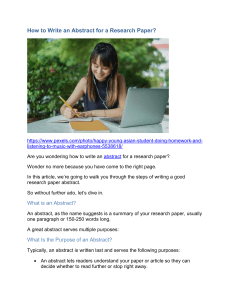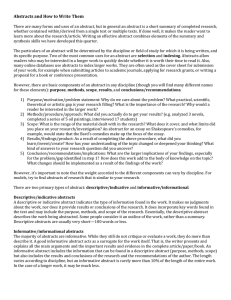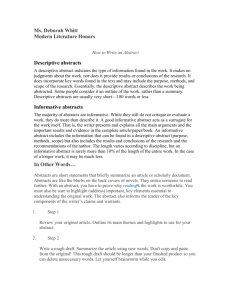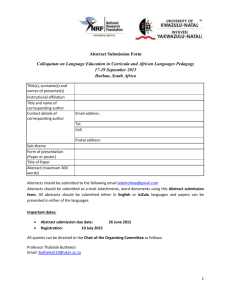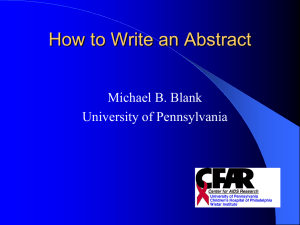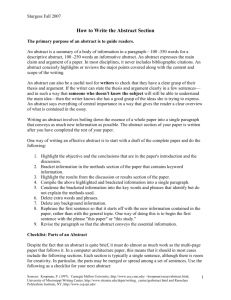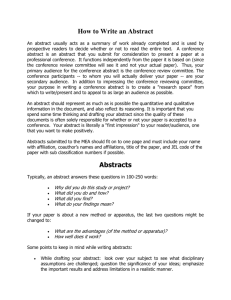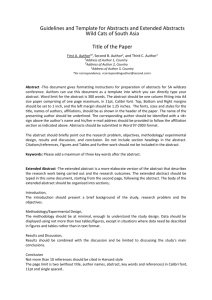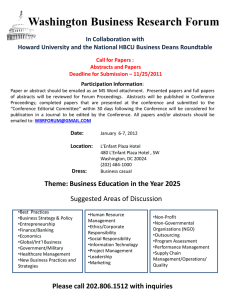The Abstract - University of Sioux Falls
advertisement
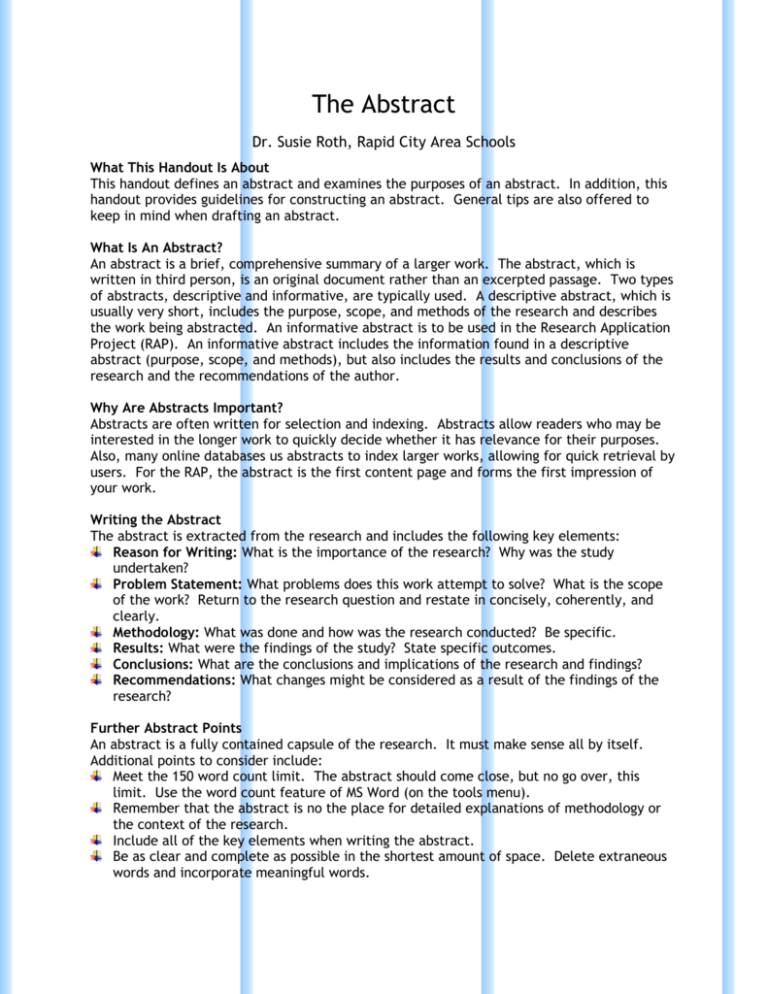
The Abstract Dr. Susie Roth, Rapid City Area Schools What This Handout Is About This handout defines an abstract and examines the purposes of an abstract. In addition, this handout provides guidelines for constructing an abstract. General tips are also offered to keep in mind when drafting an abstract. What Is An Abstract? An abstract is a brief, comprehensive summary of a larger work. The abstract, which is written in third person, is an original document rather than an excerpted passage. Two types of abstracts, descriptive and informative, are typically used. A descriptive abstract, which is usually very short, includes the purpose, scope, and methods of the research and describes the work being abstracted. An informative abstract is to be used in the Research Application Project (RAP). An informative abstract includes the information found in a descriptive abstract (purpose, scope, and methods), but also includes the results and conclusions of the research and the recommendations of the author. Why Are Abstracts Important? Abstracts are often written for selection and indexing. Abstracts allow readers who may be interested in the longer work to quickly decide whether it has relevance for their purposes. Also, many online databases us abstracts to index larger works, allowing for quick retrieval by users. For the RAP, the abstract is the first content page and forms the first impression of your work. Writing the Abstract The abstract is extracted from the research and includes the following key elements: Reason for Writing: What is the importance of the research? Why was the study undertaken? Problem Statement: What problems does this work attempt to solve? What is the scope of the work? Return to the research question and restate in concisely, coherently, and clearly. Methodology: What was done and how was the research conducted? Be specific. Results: What were the findings of the study? State specific outcomes. Conclusions: What are the conclusions and implications of the research and findings? Recommendations: What changes might be considered as a result of the findings of the research? Further Abstract Points An abstract is a fully contained capsule of the research. It must make sense all by itself. Additional points to consider include: Meet the 150 word count limit. The abstract should come close, but no go over, this limit. Use the word count feature of MS Word (on the tools menu). Remember that the abstract is no the place for detailed explanations of methodology or the context of the research. Include all of the key elements when writing the abstract. Be as clear and complete as possible in the shortest amount of space. Delete extraneous words and incorporate meaningful words.
